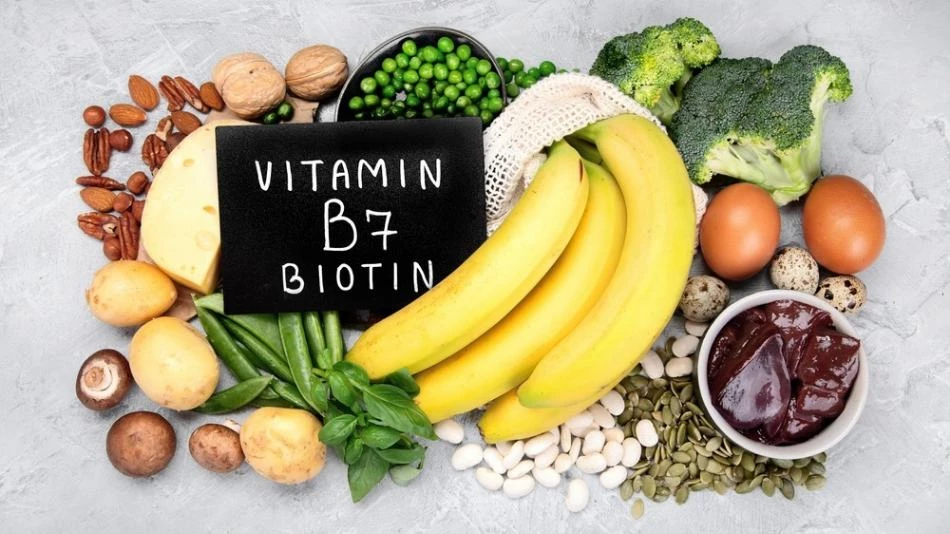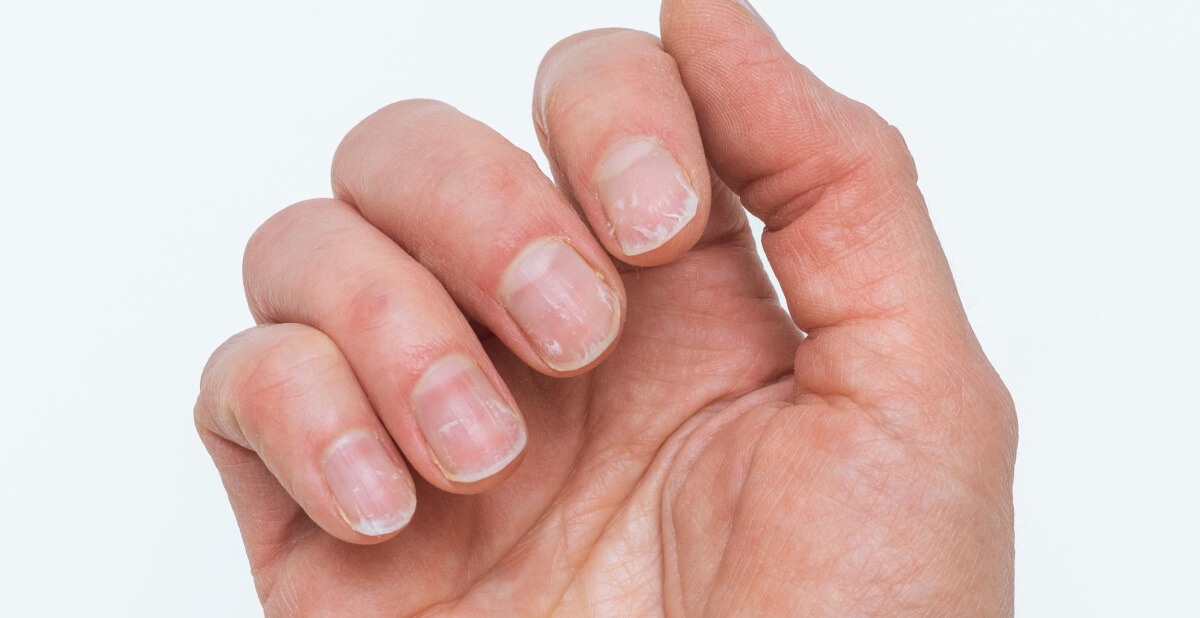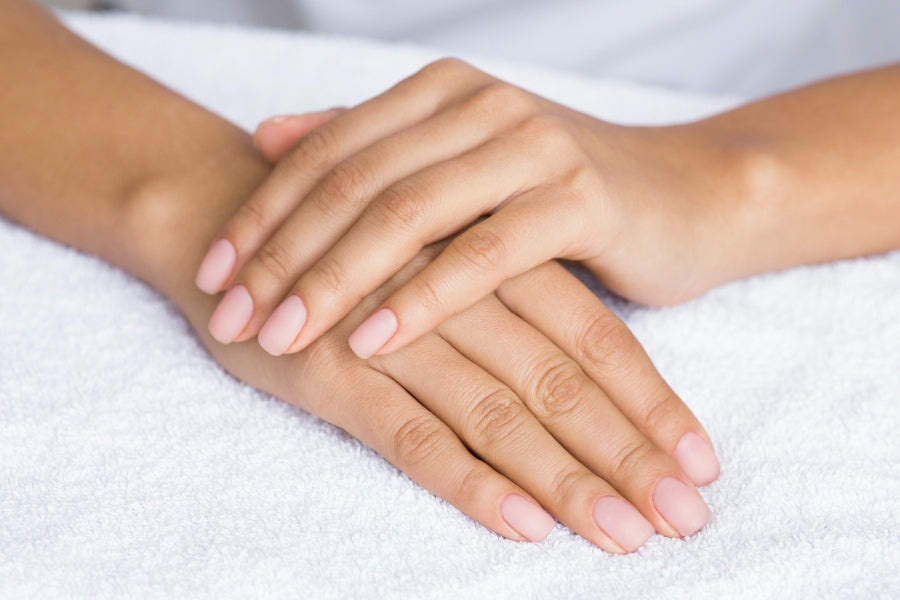Healthy nails are often overlooked in daily self-care, but their condition can offer valuable insights into your overall well-being. When nails frequently split, crack, or appear unusually shaped, these changes may reflect more than just external wear—they could be signs of nutritional deficiencies, hydration problems, or underlying health conditions.
Understanding what causes brittle or weak nails is essential to maintaining not only good nail health but also a stronger, healthier body overall. Below, we’ll explore common reasons for nail brittleness and the steps you can take to support healthier nails—naturally and safely.

1. Nutritional Deficiencies
One of the most common reasons for weak, brittle, or slow-growing nails is a lack of certain key nutrients in the diet. Nails are made up primarily of keratin, a protein, and they require various vitamins and minerals to grow strong and stay resilient.
Biotin (Vitamin B7)
Biotin is a water-soluble B vitamin that plays an important role in maintaining healthy nails, hair, and skin. A deficiency in biotin can lead to brittle nails that are more prone to splitting and breaking. According to the National Institutes of Health (NIH), biotin deficiency is rare but can occur due to poor dietary intake or prolonged use of certain medications.

Iron
Iron supports the production of hemoglobin, which carries oxygen to cells throughout the body, including the cells responsible for nail growth. An iron deficiency can result in brittle or spoon-shaped nails. This condition, known as koilonychia, should be evaluated by a medical professional.

Protein
Keratin, the primary component of nails, is a type of protein. When your diet lacks sufficient protein, your body may struggle to produce strong, healthy nails. Low protein intake may also slow down nail growth.
![Protein là gì? Tất Tần Tật Những Gì Cần Biết Về Protein [2025]](https://file.hstatic.net/1000026167/file/protein-la-gi_4c4ce7bf99f04d619727065157f6d9b5.jpg)
2. Hydration and Nail Health
Just like your skin, nails need adequate moisture to stay healthy. Dehydration or insufficient fluid intake can cause nails to become dry and brittle. This is especially common in individuals who frequently wash their hands or use alcohol-based hand sanitizers.

3. Environmental Stress and Chemical Exposure
Nails are regularly exposed to various environmental factors that can compromise their strength and appearance.
Chemical Irritants
Frequent contact with harsh chemicals—like those found in household cleaners, dishwashing detergents, or acetone-based nail polish removers—can strip the nails of their natural oils. Over time, this may weaken the nail structure and lead to increased breakage.
How to protect nails:
-
Wear gloves when cleaning or doing dishes.
-
Use acetone-free nail polish removers.
-
Moisturize after exposure to drying agents.
Weather and Climate
Exposure to dry or cold weather can also affect nail health. During winter months, for example, nails may become more brittle due to reduced humidity levels in the air.
Helpful habits:
-
Wear gloves in cold weather.
-
Apply hand and nail moisturizers regularly.
-
Use a humidifier indoors during dry seasons.
4. Underlying Health Conditions
Changes in nail texture, shape, or strength may sometimes signal more serious underlying health conditions. While not all nail issues are cause for concern, persistent or unusual symptoms should be evaluated by a medical professional.
Thyroid Disorders
Thyroid hormones play a role in regulating growth and metabolism, including the renewal of skin and nail cells. Both hypothyroidism (underactive thyroid) and hyperthyroidism (overactive thyroid) can cause nail changes such as brittleness, thinning, or slow growth.
A simple blood test can help detect thyroid-related issues, and appropriate treatment is available under the guidance of an endocrinologist or healthcare provider.
Psoriasis
Psoriasis is a chronic autoimmune condition that affects the skin and sometimes the nails. Nail psoriasis may present as pitting (small depressions in the nail), discoloration, or separation of the nail from the nail bed. Treatment typically involves managing the underlying skin condition, often with topical or systemic medications prescribed by a dermatologist.
Fungal Infections
Fungal nail infections (onychomycosis) are common and can cause nails to thicken, become discolored, or break easily. These infections often begin in the toenails but can also affect fingernails. Antifungal medications—oral or topical—are effective treatments. Early diagnosis improves outcomes and helps prevent the spread of the infection.
5. Physical Trauma or Repetitive Stress
Using nails as tools—for example, to open packaging or scrape surfaces—can lead to trauma that causes them to split, peel, or break. Even small injuries that are repeated over time can weaken nail structure.
Tips to reduce trauma:
-
Keep nails trimmed to a practical length.
-
Avoid using nails for tasks better suited for tools.
-
File nails gently in one direction rather than sawing back and forth.
6. Natural Aging Process
As people age, nails may become more fragile and prone to breaking. This is partly due to reduced oil production and slower cell turnover in the body. Age-related nail changes are natural, but there are ways to reduce their impact.
Supportive strategies:
-
Eat a balanced diet rich in omega-3 fatty acids (found in fish, flaxseeds, and walnuts).
-
Use cuticle oils or hand creams regularly.
-
Minimize exposure to drying products and environments.
When to See a Healthcare Provider
If you notice sudden or persistent changes in your nails—such as discoloration, ridges, thickening, or pain—it’s best to consult a healthcare provider or dermatologist. These symptoms could indicate infections, nutrient deficiencies, or systemic health conditions that need professional evaluation.

Final Thoughts
Your nails do more than complete your appearance—they can serve as indicators of your body’s overall health. By recognizing the signs of nail brittleness and understanding their potential causes, you can take meaningful steps toward improving both your nail strength and your general well-being.
Proper nutrition, hydration, protection from harsh chemicals, and medical attention when needed can go a long way in restoring nail health. A proactive approach will not only help you achieve strong, attractive nails but also support your overall health journey.


